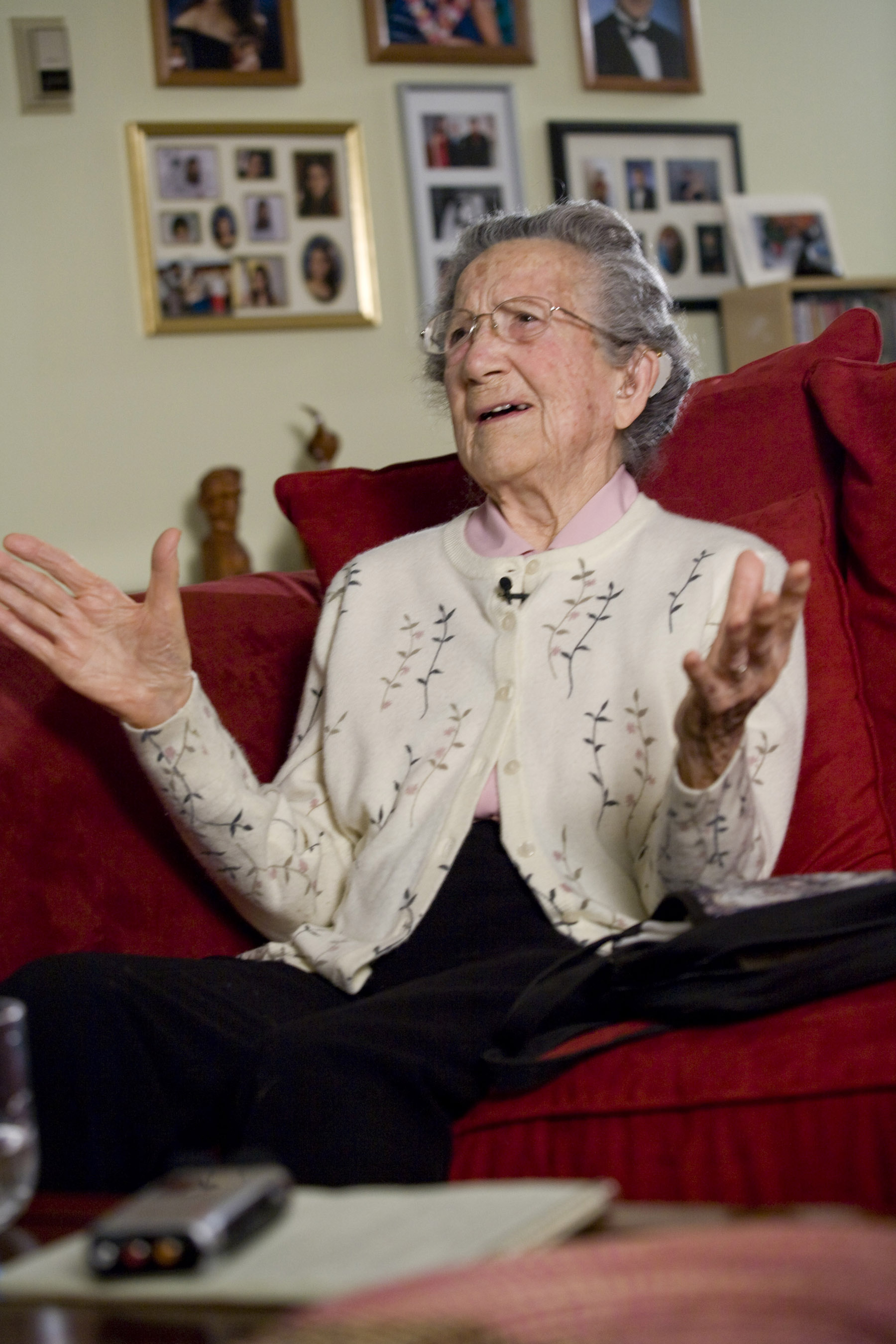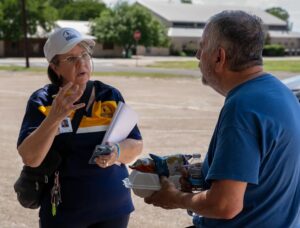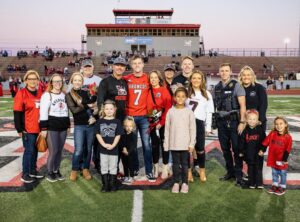
RICHMOND, Va. (BP)–“Are you in the Lord’s will?” asked 99-year-old emeritus missionary Ruth Carlisle. “Yes, ma’am,” a young woman replied.
“Do you want to be a missionary?” Carlisle continued. Again the woman said, “Yes, ma’am.”
“Then why don’t you go?” Carlisle responded.
It was a valid question from a woman who spent 29 years of her life serving as a missionary overseas.
The Foreign (now International) Mission Board appointed Carlisle and her husband Robert as missionaries to Uruguay in 1940. On the same day, Howard McCamey and his wife, Georgia, were commissioned to serve in Nigeria. Howard, the IMB’s oldest living emeritus missionary, is 101. Ruth will turn 100 on Dec. 22.
When the McCameys and Carlisles were commissioned as missionaries the process for going to the mission field was much shorter, yet the journey was much longer.
The missionary couples traveled by ship 18 days to reach Uruguay and 31 days to reach Africa, respectively.
Today, orientation is eight weeks long, locations are plane rides away and missionaries often complete at least a year of extensive language training before going to their areas of service.
“Really, we didn’t have any orientation,” Carlisle said. “The president of the board then had said to my husband, ‘Carlisle, you might start an institute or seminary where the Uruguayans could be trained. Maybe that’s what you’ll be doing.'”
THE CARLISLES
South of the equator, Uruguay is vulnerable to drastic climate changes from the warm Brazil winds and the cold polar air of Antarctica.
With no heaters in their home — or anywhere for that matter — the Carlisle family learned the art of layering clothes.
“You were never really warm,” Carlisle said. “We got permission to have a fireplace built [in our home] … but you went to church, no heat. [When we] went shopping, wherever you went, no heat.”
The climate was not the only thing that was cold, Carlisle recalled. Uruguay has been described as one of the hardest countries in South America to reach with the Gospel.
“Little by little, people came to the Lord. It wasn’t fast,” she said. “Uruguay has never been an easy place to win people.”
When people are pleased with their quality of life, they tend to think they have everything under control, Carlisle said. “What more did they need? They didn’t need God. So [it was] very difficult.”
The Carlisles spent their first years planting churches. Then at the urging of other missionaries, Robert Carlisle founded The Baptist Bible Institute of Uruguay in 1956 with a group of eight students who lived with his family.
“[Robert] took the New Orleans Seminary book[s] that he had from his days there and went by that to set up [the institute],” Carlisle said of her late husband. For her part, she served as cook, nurse and counselor.
The Carlisles retired from missionary service in 1969, and Ruth lives in Mississippi with one of their eight children.
Son Jason, and his wife Susan continued his parents’ legacy of missionary service in Uruguay. They served there 19 years before Jason began the Hispanic mobilization office in 1999 as a missionary assigned to Richmond, Va. In 2005, he became an IMB staff member serving as a Hispanic mobilization consultant.
THE MCCAMEYS
Howard and Georgia McCamey were commissioned as missionaries to Nigeria on April 10, 1940, one day before his 34th birthday.
Following their month-long voyage to Cape Town, South Africa, the McCameys had to travel up the coast using indirect routes to avoid German U-boats trying to sink ships during World War II. It took them more than a week to make the journey.
But their exhausting trek was still not over. When they reached Lagos, Nigeria, they were met by another missionary who then drove them 176 miles to Ogbomosho.
“The roads were bad,” McCamey wrote in his journal. “We had lunch on the side of the road … under a tin roof. There were no gas stations.”
When they arrived in Ogbomosho, Howard, a dentist, found himself in charge of a 46-bed medical hospital, 12 leper colonies and two medical dispensaries. He performed emergency dental work with only a foot drill and a flashlight.
Georgia, a nurse, helped staff the hospital, kept the books, taught new nurses, delivered babies, conducted a well-baby clinic once a month and was qualified to administer anesthetics. The couple’s numerous responsibilities meant long hours at the clinic.
With no running water, Howard dug water holes by hand and piped water to the hospital. He tried to teach the locals to dig water holes so they also could have clean water, but it didn’t go over easily, according to entries in his journal.
The McCameys returned to Texas in 1948 so Howard could update his dental skills. They went back to Ibadan, Nigeria, in 1954 to run a dental clinic on the second floor of the local Baptist building.
When Queen Elizabeth and Prince Philip visited Nigeria in 1956, the McCameys attended the queen’s reception and garden party. The queen shook their hands, McCamey wrote in his journal, while Prince Philip joked with them about how they attracted people to their dental clinic.
“I saw you on the second floor of the balcony,” the prince said. “How do you get people to walk up a flight of stairs to get their teeth cleaned?”
“If their teeth hurt badly enough, they’ll come,” McCamey replied.
Though the McCameys had no biological children, boys who helped out in the clinic became like their own. The McCameys taught them to clean teeth and make dentures, encouraged them to go to school, and helped provide them with clothes and shoes. They also talked with them about their faith in Christ as Savior.
One of the boys, Olaleyee Aremu, showed particular interest in dentistry, so McCamey mentored him in the practice. He, along with doctor friends in the United States, helped Aremu attend college. Three years later, Aremu graduated summa cum laude from Howard University in Washington, D.C., and went on to dental school.
After dental school, Aremu returned to Nigeria to help McCamey at the clinic. He eventually oversaw the clinic when the McCameys retired to Dallas in 1971 and went into private practice.
Georgia died in 1994, and Howard lives with his sister in St. Louis.
–30–
Marie Travis writes for the International Mission Board.















